Balinese cat: origin, nature and conditions of detention

In the life of every person, there is a need to make a special friend to whom you can tell about painful things, share good news and just hug you after a hard day at work. A certain circle of people chooses cats as a living outlet. They are quite cute, gentle, affectionate and kind creatures. If necessary, they will be able to calm their master and listen. Unfortunately, not all cats are capable of playing the role of man's best friend. Among the huge variety, the Balinese breed is considered to be loyal and devoted companions.
Origin story
The Siamese breed became the progenitor of the Balinese cats, but it is not clear how this happened. To date, two versions of the emergence of balineses are assumed. The first is the mutation of the Siamese, the second is the crossing of the Siamese and the Angora.
Quite often, Siamese cats have babies with elongated fur. At that distant time, cat lovers considered unusual babies to be culling, they did not tell anyone about their appearance. And only in 1940, in the United States of America, one breeder made the decision not to get rid of long-haired kittens, but to honor them with the title of a separate breed.
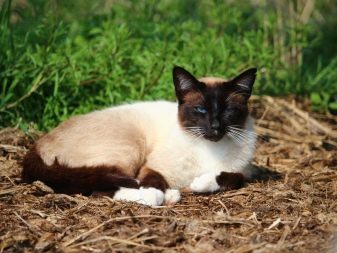
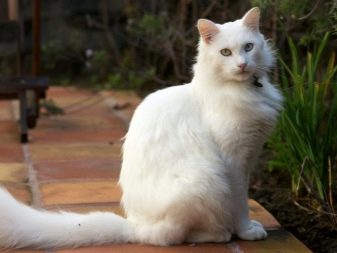
Marion Dorset, that very determined cat lady, in 1950 began serious work on breeding cats of a new breed. And 10 years later, Helen Smith joined her. It was she who decided to update the names of the breed being bred from Siamese Longhair to Balinese. In her opinion, the new type of cats was distinguished by special grace and elegance of movements, in many ways reminiscent of dancers from the island of Bali performing a musical number.
It may seem to some that this characteristic is not the basis for the name of the breed, but Ellen Smith did not think so. Thanks to her sophistication and sophistication, she managed to find a fine line and the maximum similarity between the movements of an animal and a person engaged in professional dances, which is why she decided to propose such a name.
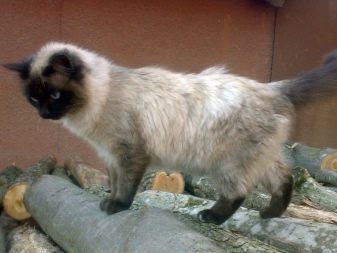

In addition, from a geographical point of view, the island of Bali is located quite close to Siam (known today as Thailand). This fact also provides food for thought about the origin of the breed.
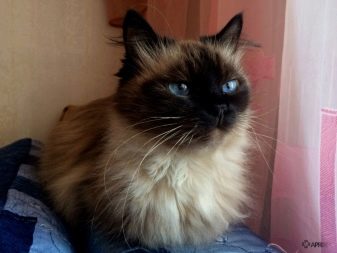
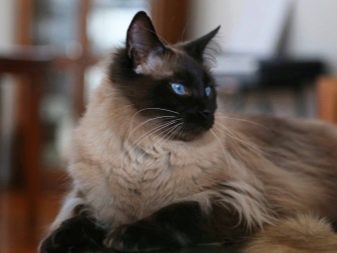
After the official presentation of the Balinese breed, breeders of Siamese cats became confused and began to feel a sense of hatred towards the representatives of the new species of the feline family. In their opinion, the Balinese should have played a significant role in reducing the demand for shorthaired kittens. Another fear of Siamese lovers was the genetic issue. They feared that the long-haired animals would negatively affect the purity of the Siamese breed.
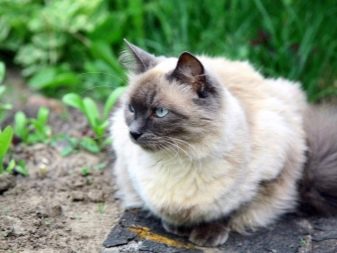
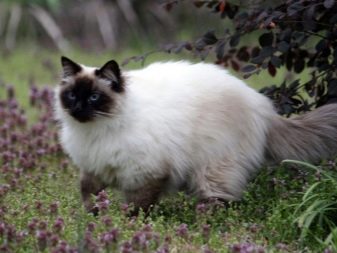
For a long time, Balinese cats received only negative recommendations, which is why they were not recognized by society. It was only thanks to the persistence of breeders in 1970 that the Association of American Cat Lovers recognized the Balinese as equal animals. And Europe adopted them in 1980. According to world data, in 2012, the Balinese cat breed was in the honorable 28th place among 42 species officially recognized by the United States of America.
Important! In Russian, the Balinese cat breed has several variants of names, for example, Balinese and Balinese. On the territory of the post-Soviet space, it is customary to use an extended name.
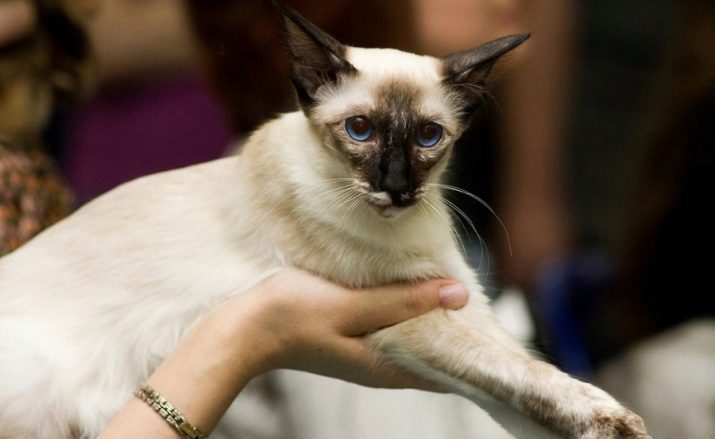
Description
Today, Balinese cats are very popular among cat lovers. Many people are attracted not only by external data, but also by the acceptable cost of the animal.
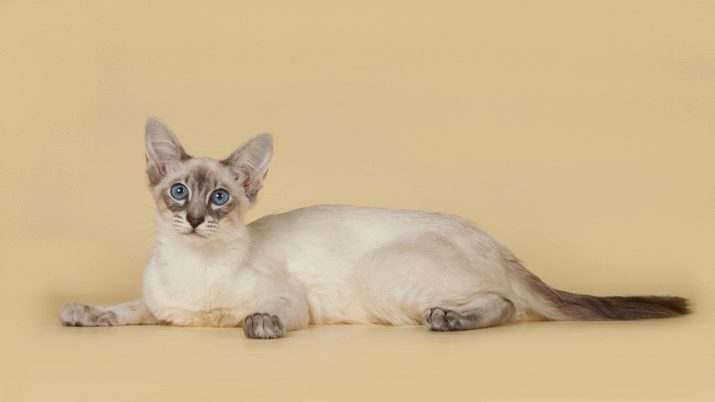
When choosing a purebred cat, you should know that they have special traits that do not allow them to be confused with other species of representatives of the feline world.
- The Balinese head is characterized by a wedge-shaped shape of medium size. The ears are large, erect.
- A distinctive feature of the Balinese cats is their expressive blue eyes, reminiscent of two bright sapphires. In this quality, they are similar to their Siamese counterparts. In every look of a furry pet, you can feel joy, curiosity and interest in the world around you.
- The elongated body of the Balinese is distinguished by developed muscles, thanks to which they are able to jump considerable distances, and also easily conquer the high peaks of furniture. An adult female of the presented breed weighs 3.5 kilograms. Males weigh a little more, their body weight reaches a maximum of 5 kg.
- The structure of the representatives of the Balinese breed has special characteristics. Their hind legs are slightly longer than the front ones, while the front ones have a slightly oval shape, due to which a grace and refinement of the gait is provided. These qualities allow the animal to move silently around the house, as well as run and jump without making any harsh sounds.
- Balinese hair is soft and silky, very pleasant to the touch. Unlike other breeds, these furry creatures do not have an undercoat, as they were bred to live at home.
- There is a visual grace in the thin and long tail. The luxurious skin of this limb is distinguished by its fluffiness, which is an important distinguishing feature of the breed, thanks to which even novice breeders will not be able to confuse a purebred animal with culling.
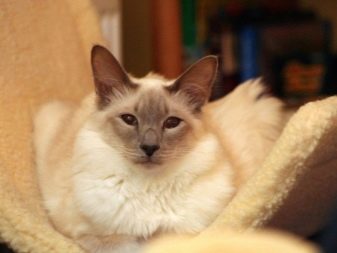
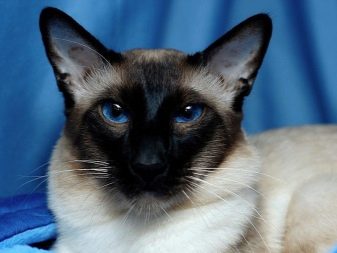
In representatives of the long-haired breed, slanting eyes are quite common.Unfortunately, unscrupulous sellers expose this feature as a marriage, which is why they can sell even mongrel kittens with such a flaw.
The tail with a break at the tip, as well as contrasting spots in the chest, light hair on the ears and paws, should be considered in a similar way. Today, there are about 20 types of Balinese cats, among which four points are considered the most common. It is worth noting that until 2008, only they were admitted to cat shows, and after a while the evaluating commission gave permission for the participation of Balinese specimens, bred by crossing Javanese and Balinese species.
Around the same period, the less popular tabby color was born, expressed in leopard and brindle coat patterns. Only in terms of color can it have other shades.
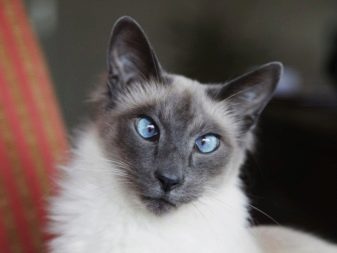
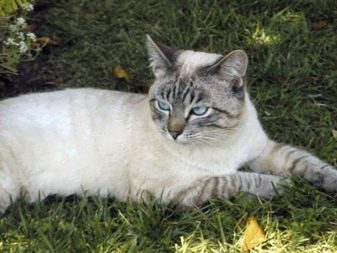
A distinctive feature of the Balinese points is the dark color of the muzzle, paws and tail. No stains of a different color should be present on these parts of the body. To date, the following points are considered with special colors:
- blue - in this case, we are talking about white wool, which has a bluish tint on the body, smoothly turning into a darker shade;
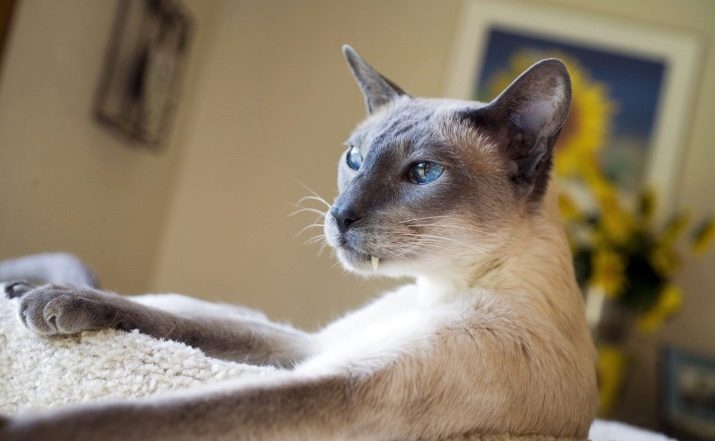
- frost or purple - we are talking about a white fur coat of an animal with a grayish pink tint of the body, smoothly flowing into a dark shade;
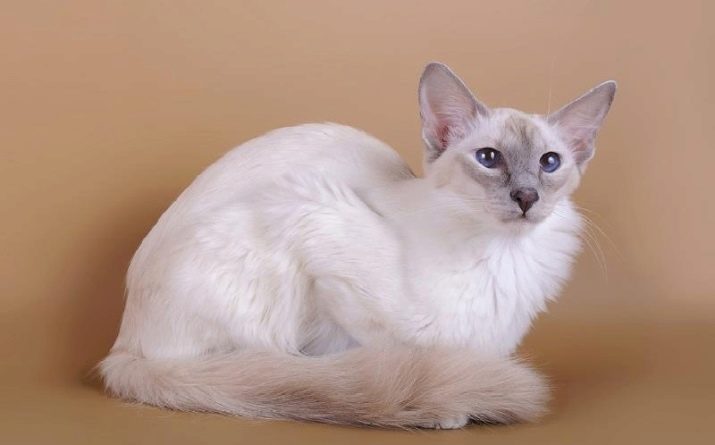
- chocolate - cats with a similar color have a light brown coat, reminiscent of milk chocolate;
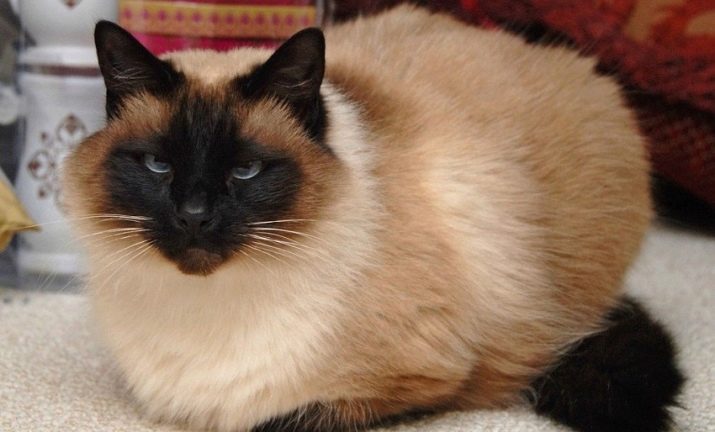
- forces - a very interesting coat color, presented in dark colors; the almost black shade of the skin contrasts perfectly with the light tones on the body of the Balinese handsome.
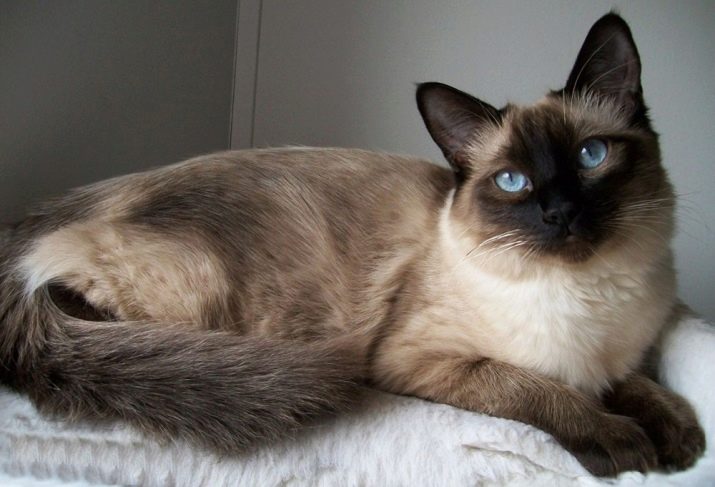
Beginning breeders should be aware that black or red Balinese cats do not exist.
Quite often, unscrupulous sellers take advantage of the lack of such knowledge in this area and sell outbred animals.
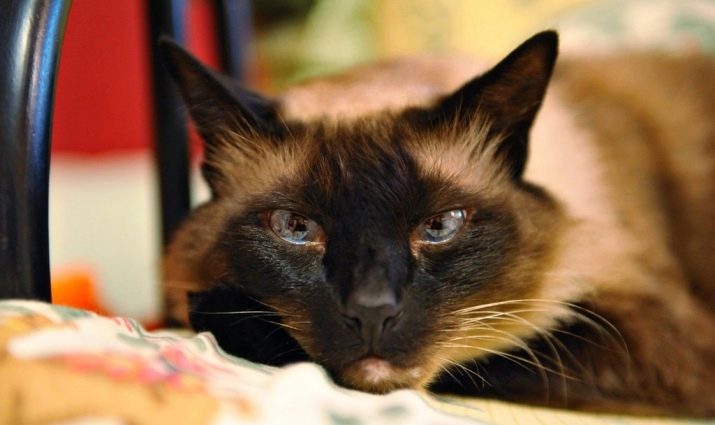
Character traits
Balinese cats have amazing personality traits. They love their masters very much. Once in the family, they become attached to it as much as possible. Balinese cats will be able to become man's best friends, who will never leave or betray. They are ready to be close to their owners in any situation and at any time, be it a bad mood or a night's sleep.
Balinese cats are very sociable personalities. They are ready to listen to the stories of their owners about how their day went, and they themselves rush to share their impressions of the events that happened to them. The main thing is not to raise the tone when talking, otherwise the four-legged friend may get upset, deciding that he is the cause of the raised voice.
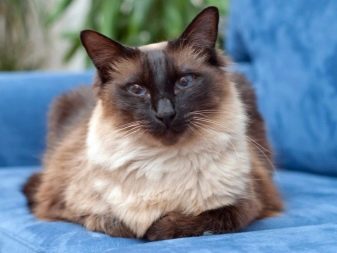
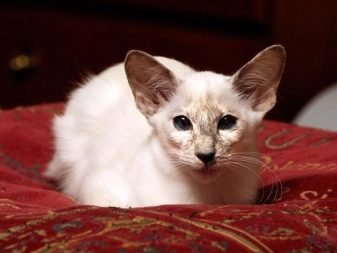
It is important for Balinese cats to pay enough attention. They are very difficult to tolerate loneliness, so you should not leave them alone for a long time. Balinese are quite positive about playing games with the owner. They are able to turn any thing or object into a means of entertainment. An ordinary candy wrapper tied with a thread can lure a fluffy animal for a long time. Their friendliness allows them to find a common language with other apartment pets.
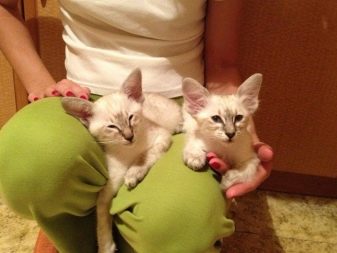

Balinese cats treat children with great interest. In a way, they can become four-legged nannies for them. However, parents should exercise some caution.
Balinese do not like to be chased, and young children are very interested in running after a cat in an attempt to catch it.

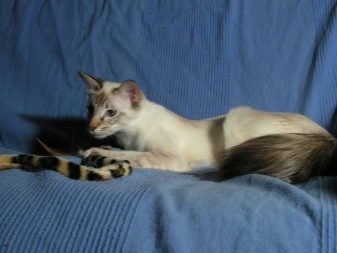
How many years do cats live?
Balinese are considered to be long-lived cats. With proper care, representatives of this breed will be able to live a happy life, constituting 15, and even 20 years. Of course, there are times when an animal for health reasons can die at any time. But pets have a much lower risk of sudden death than street pets. Veterinarians note that the Balinese have excellent health. But even this factor does not speak about one hundred percent safety and animals.
Very rarely, but even during childbirth, kittens of the Balinese breed die. Most often this is associated with possible diseases of the mother that were not identified during pregnancy, or with the weakness of the baby's body.
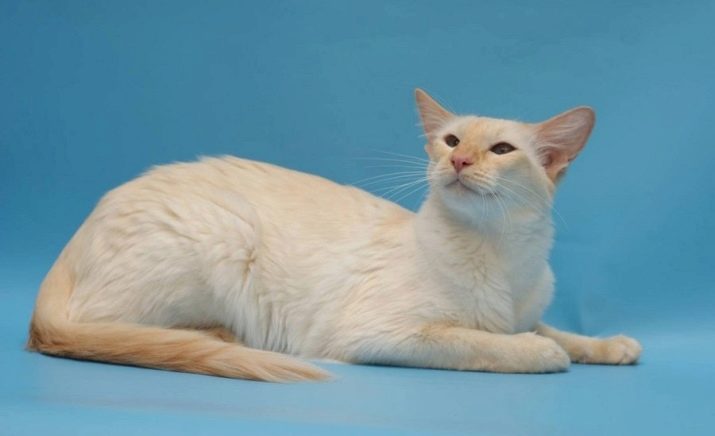
Conditions of detention
The Balinese cat breed by its nature is undemanding to the conditions of keeping. For them, a warm climate in the house, regular feeding, kindness and expression of love for the pet are extremely important. Before bringing a Balinese cat into the house, the future owner must determine whether he can become a real friend for the animal. A person should understand that he will be able to provide a four-legged friend with the necessary care and love.
For this reason, for families who are often not at home, it is best to look for another breed that can be left alone in the apartment, for example, a wayward Persian or an independent Briton.
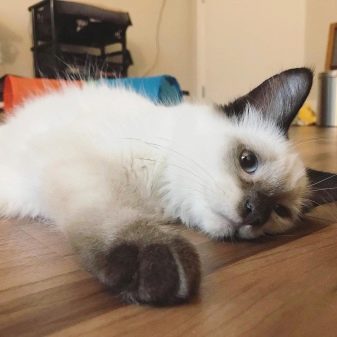
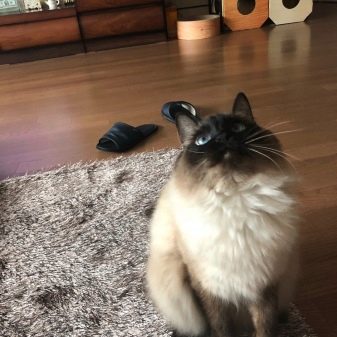
Balinese cats will experience the same sense of coziness and comfort, living both in an apartment and in a large house. The main thing is that the living area is warm, because these cats have no warming undercoat at all. If you take out the balinese outside in winter, it will freeze very quickly, and in the warm season it is permissible to walk the cat outside or in the front garden. Feeling freedom, the animal can play out and run away from the owner, and then not find its way back. For this case, it is advisable to use a harness with an extended leash.
Few people know, but Balinese cats are acutely cool or intensely hot... In the room where the animal lives, the air temperature should have an average value of + 23 ° C. If the temperature is below normal, the activity of a specific gene, which is responsible for the color of the coat, decreases in the cat's body, which makes it darker.
In simple terms, wool is a kind of indicator that allows you to determine temperature fluctuations in an apartment or house.
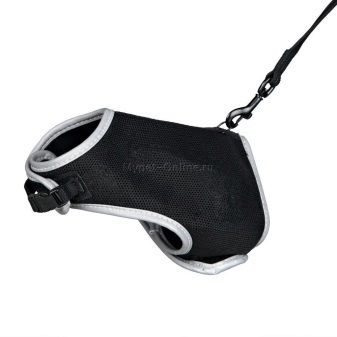
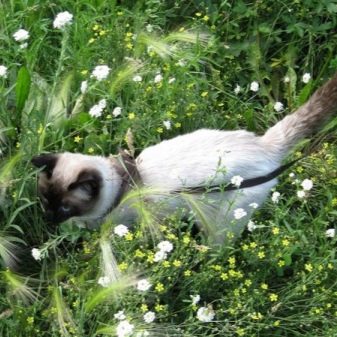
Balinese are naturally active and playful creatures, much like small children. They need increased attention, as well as spending time together for active games. It's funny that these four-legged pets are able to turn any household item into a unique and interesting toy. Although, for such cases, most owners go to the pet store and purchase special balls, teddy mice and balls of thread.
It is very important that there are a lot of play accessories, otherwise the pet will get bored of the lack of variety. And if suddenly such a moment has come, or the cat is tired of his standard toys, he begins to indulge. If desired, he can easily jump onto the cabinet, walk along the upper shelves, try to open the drawers to get their contents.
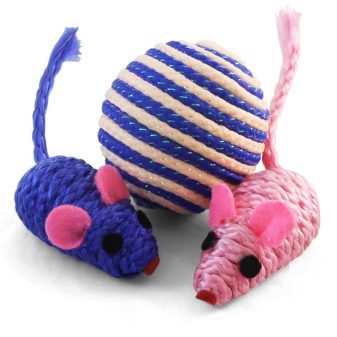

In keeping Balinese cats, special attention is paid to caring for the animals. Although representatives of this unique and special breed do not require visits to a specialized beauty salon. The owner is only required to regularly check the coat, eye care, claw trimming and ear cleaning.
In principle, this is a standard set of measures that allows you to maintain a pleasant appearance and health of your pet.
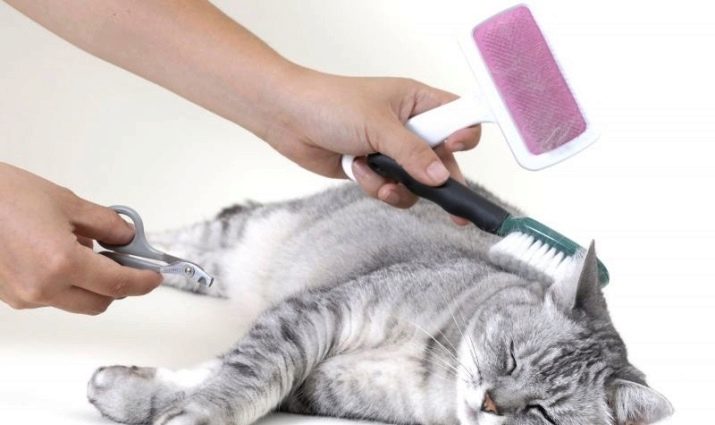
Like all cats, representatives of the Balinese breed perceive the bathing procedure with the utmost dislike. On contact with water, they begin to grumble, hiss and try to escape. That is why it is necessary to wash the animal with a company of two or three people. It is best that these are family members whom the cat has known for several days. One of them holds the animal, and the other washes. For bathing procedures, it is very important to use specialized shampoos for long hair and conditioner balm after washing.
In general, the bathing procedure is carried out only in the most extreme cases, since the balinese are accustomed to caring for their fur on their own.
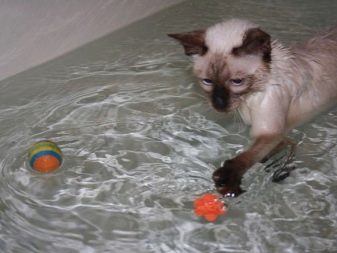
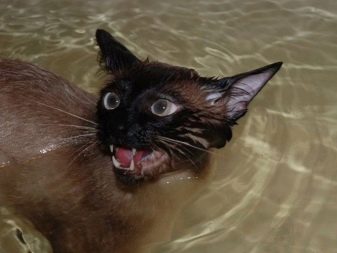
Special attention is paid to the coat of the Balinese cat. Its formation occurs in the period from a year to one and a half years of the animal. And after this age, it will be possible to understand how scrupulous the owner was about the pet's hair, what food the four-legged friend had, how often he was scratched. Balinese cats have no undercoat, which is why the hairs of his fur coat do not roll into tangles, which greatly facilitates the care of the skin.
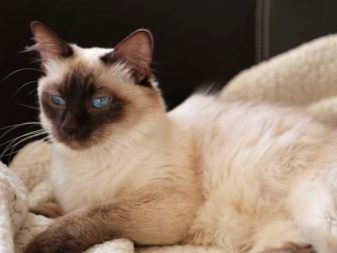
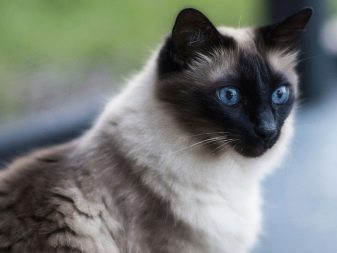
Unfortunately, most baline people are at risk of dental diseases. That is why it is important to teach the animal to brush its teeth from the early months. An examination of the oral cavity should be performed once a week, as should the treatment of the dental surface. To carry out this procedure, you will need to purchase a special toothbrush and paste, which are sold at pet stores. To make the cat enjoyable, the toothpaste should taste like his favorite treats, such as bacon.



Don't forget about ear hygiene. Experts recommend regular examinations of the ear cavity to check for impurities and parasites. If a gray coating appears in the ears, it should be removed with a cotton pad or swab. If you find an ear mite, it is important to contact your veterinarian right away. Otherwise, the animal will be pursued by constant itching, due to which the inner part of the ears will be combed by the cat until it bleeds.
Important! Along with the ears, attention must be paid to the eyes. Regular discharge that occurs after the animal sleeps is considered normal. It is enough to remove them with a cotton pad soaked in warm liquid.
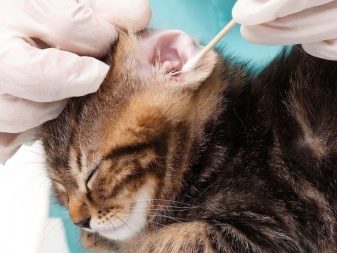
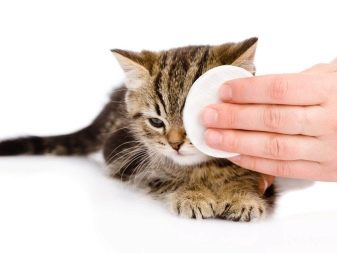
The procedure for processing claws requires special knowledge of the owner of the animal. To begin with, the cat must be comfortably seated on your lap. Then take the foot and press the pad so that the grown claws are in the person's line of sight. Then bite off the sharp ends with a special unit.
The final stage of processing the nails is polishing with a file. In the structure of each cat's claw there is a blood vessel, which is strictly forbidden to touch with cutting and splitting objects. It is necessary to carry out the procedure for trimming the nails as they grow.
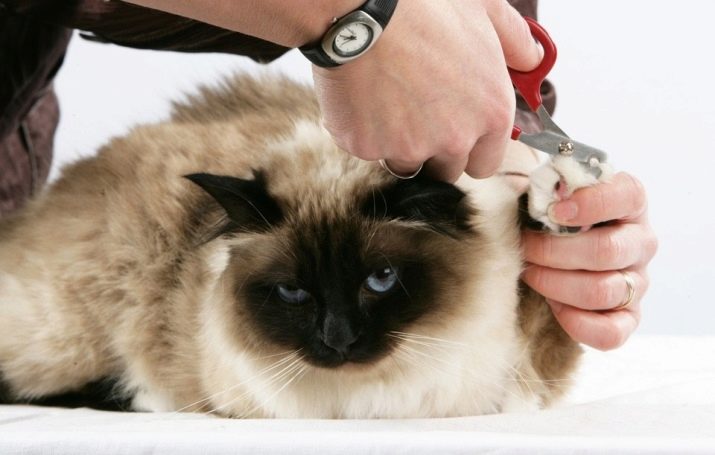
Feeding
Proper nutrition of a Balinese cat is the key to its health and excellent growth. The organization of feeding the animal does not have any particular difficulties. The main thing is to remember that you should not mix different types of food. That is why the owner of a four-legged pet it is necessary to determine in advance which type of diet is most acceptable.
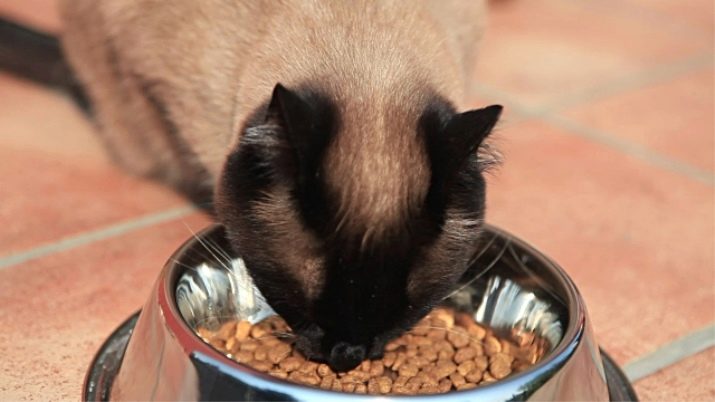
Dry and wet food
For most people, this type of diet for representatives of the Balinese cat family is considered the norm. Choosing a specialized premium food, each owner provides his four-legged friend with the most balanced nutrition that does not require any additional vitamins and mineral supplements. It is convenient to store dry food by keeping the bag in a room with an acceptable temperature.
In addition, dry food in its original packaging is not negatively affected by external factors. Even if the owner of the animal cannot appear at home for a long time, a special feeder with a timer will not allow the cat to remain hungry.

Modern manufacturers of dry food make different variations of cat food, among which pads for cats during pregnancy and lactation are given special attention. They contain a special complex of vitamins that allows the cat to receive the maximum amount and give the bulk of them to the kittens. On the shelves of pet stores are dry food for cats suffering from urolithiasis, as well as dietary supplements.
It is not recommended to use wet food as a permanent food for balineuses. They do not contain a complete set of vitamins that are so important for the health of a furry friend.
Experts, in turn, argue that wet food can provoke the occurrence of certain diseases of the animal.

Nutrition from natural products
The main thing is not to overdo it in the abundance of food and keep the animal on a certain diet. The food offered should not be greasy or spicy. Balinese cats should not be offered smoked foods. The natural diet should be based on lean meats and any by-products. Meat must be given boiled or raw, but previously scalded with boiling water. Fish products can cause allergic reactionstherefore they should be given no more than twice a month. From pollock and capelin, an animal may develop urolithiasis.
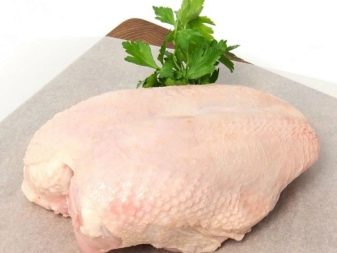
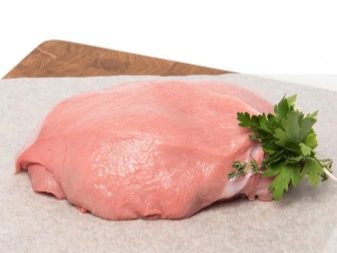
Kefir, yogurt and sour cream should be indispensable in the diet of a Balinese.... Cats of this breed can be given a small amount of porridge and vegetable stew. Be careful with potatoes, as they contain a large amount of starch. When organizing natural nutrition for a cat, it is important to remember that the animal needs to receive the maximum complex of vitamins and minerals, which may not be enough in ordinary products.
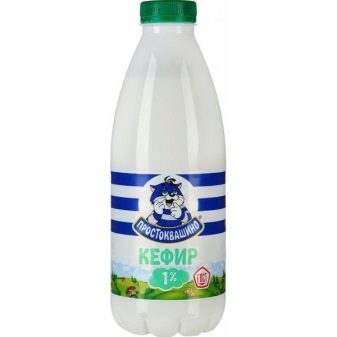

Experienced breeders have shared the following tips for healthy eating habits for Balinese cats:
- the pet must have constant access to water, the drinking liquid must be boiled and clean;
- the prepared food for the cat should not be hot, it is permissible to offer the animal food at room temperature; cut pieces of food should not be large, especially when it comes to feeding kittens;
- food given to the animal must be fresh.
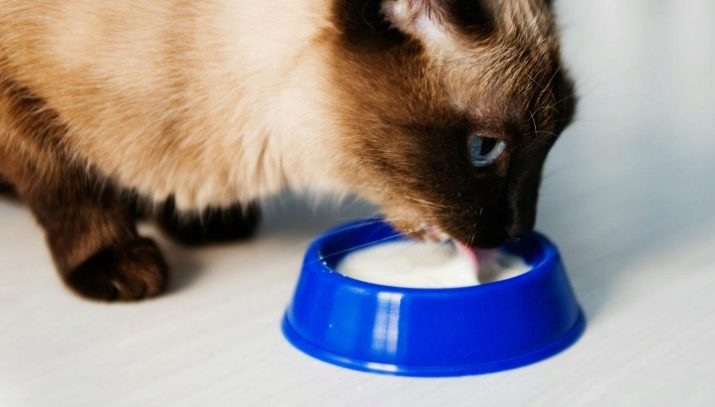
It is important for a novice breeder to read the following information about the feeding regime of the animal:
- kittens up to six months of age should be fed 4–5 times a day in small portions;
- at the age of six months to a year, cats should be transferred to three meals a day;
- grown individuals are enough to feed 2 times a day, in the morning and evening.
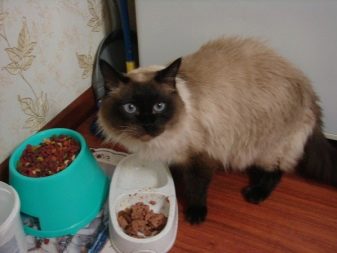
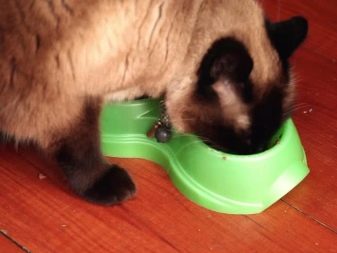
Health
The difference between the Balinese and Siamese cat breeds lies in only one gene, which is responsible for the length of the coat. Accordingly, the Balinese inherited from their progenitors the diseases and infections that Siamese often suffer from. Of course, the Balinese representatives of the breed are distinguished by excellent health, due to which they are able to live for 15 years, and some live up to 20 years of age.
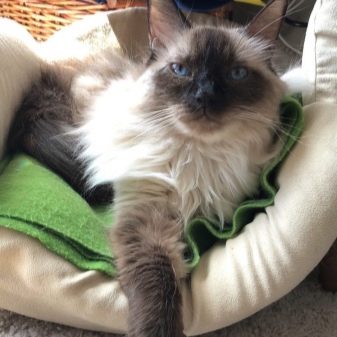
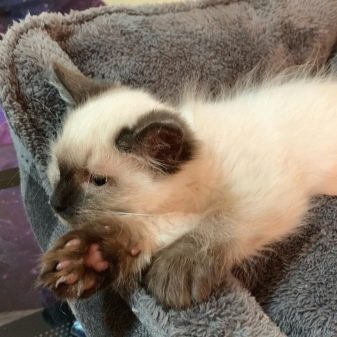
Yet certain types of diseases plague the Balinese family.
- The most common disease is amyloidosis. In simple terms, this is a violation of protein metabolism, which is accompanied by formations and deposits in the tissues of amyloid. This disease can affect the feline liver and cause whole body dysfunction with subsequent death. The spleen, pancreas and gastrointestinal tract can also be affected. Most often, this disease occurs in cats between the ages of 1 and 4 years. The main symptoms are loss of appetite of the animal, constant thirst, vomiting, yellowness and depression.
Unfortunately, a cure for this disease has not yet been found, but there are drugs and special therapy that can slow down the progressive pace of the disease. The main thing is to diagnose amyloidosis in the early stages.
- Another disease inherited from the Siamese breed is dilated cardiomyopathy. In simple terms, it is a heart condition. Special attention should be paid to dental diseases of the animal. At the genetic level, they have a tendency to form tartar and gum disease.If you do not see a doctor in a timely manner, your cat may lose teeth. Lack of dental treatment can lead to a weakening of the immune system, which will generally affect the health of the animal.
- Another problem can be hereditary heart disease. It is possible to identify the disease in the early stages of development, but the entire subsequent life of the animal will pass under the regular examination of the veterinarian. The kittens themselves are passive from the moment of birth, grow very slowly, and begin to suffocate under light loads.
- Cutaneous asthenia can also cause a lot of worries. This condition produces defective collagen in the skin, making it quite tender and vulnerable. With any exposure, the animal appears wounds.
- Asthma in representatives of the Balinese feline family, in many ways resembles human bronchial asthma, which can be caused by an allergen.
- Quite unpleasant, but representatives of the Balinese breed suffer from cancer. Old Balinese people often struggle with diabetes.
- Per strabismus Balinese cats are responsible for a special gene, enclosed in the structure of the animal's DNA, inherited from Siamese cats and depending on the point color of the coat. Unfortunately, it is impossible to get rid of strabismus. Although in some balineses, congenital strabismus may disappear after a while.
For more information on Balinese cats or Balinese cats, see the next video.
































